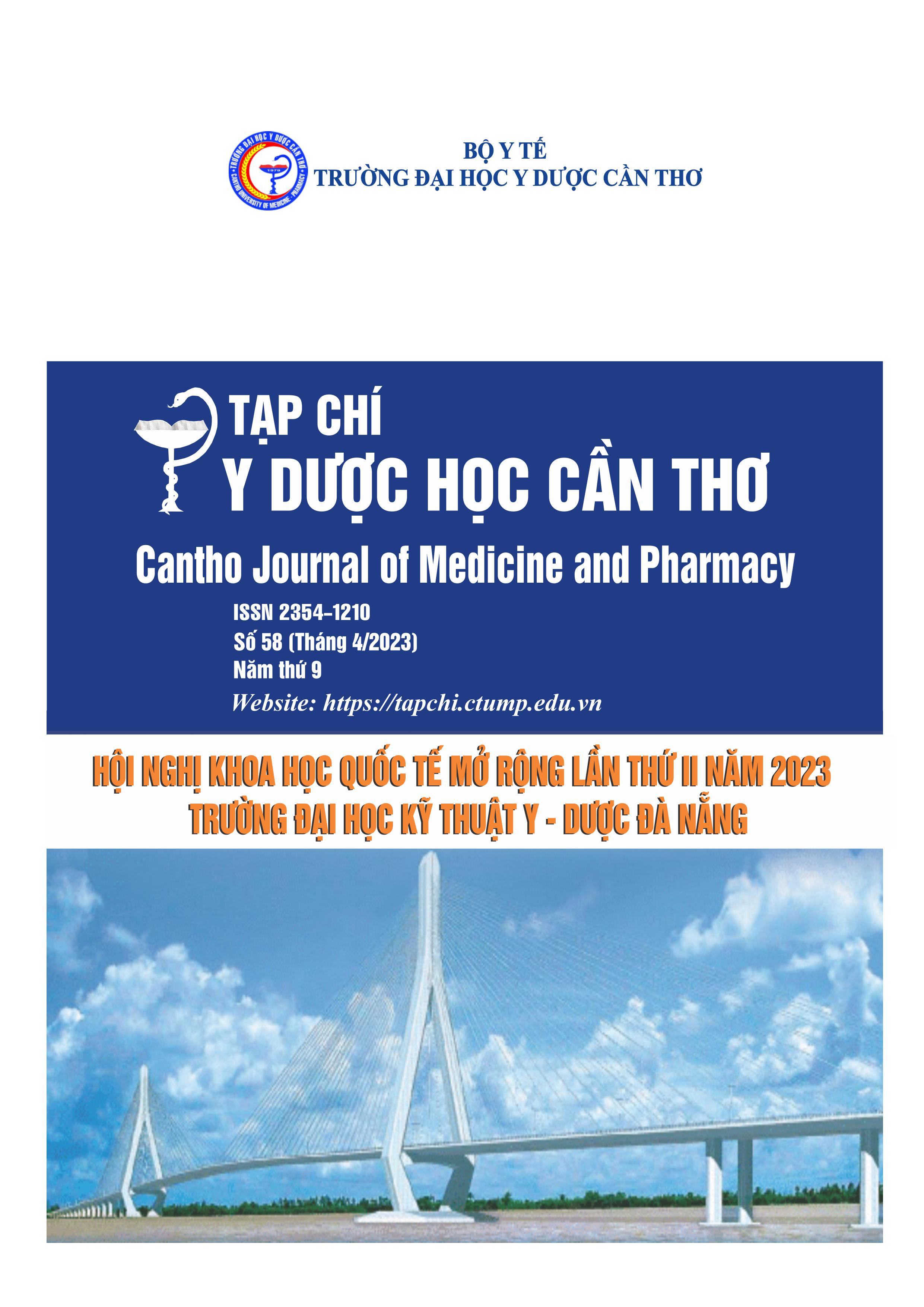AGE OF NATURAL MENOPAUSE AND RELATIONSHIP WITH SOCIAL ECONOMIC FACTORS IN POSTMENOPAUSAL WOMEN AT DA NANG HOSPITAL FOR WOMEN AND CHILDREN
Main Article Content
Abstract
Background: Menopause is the absence of menstruation and the inability to reproduce naturally. The activities and habits of individuals and regions of residence affect the age of menopause as well as the quality of life of postmenopausal women. Objectives: To identify the mean age at natural menopause (ANM) and the association of socioeconomic status with ANM. Materials and method: A cross-sectional study on 341 postmenopausal women, seen at the Obstetrics Department, Da Nang Hospital for Women and Children from December 2022 to August 2022. Research was done by questionnaire for each researching object, general examination, gynecological examination to identify the average age of natural menopause and the relationship between social economic factors and age of menopause. Results: The mean ANM (SD) 49.86 ± 3.37 years. Women who worked in agriculture were more likely to have a sooner age at menopause than women in other occupations. Women with economic status from near-poor and poor households had the lowest mean age of natural menopause. Women with a high school education or higher had a late onset of menopause. Conclusion: There is a between occupations, social economic and education with age of menopause.
Article Details
Keywords
Age of menopause, relationship, Da Nang Hospital for Women and Children
References
2. Bộ môn Phụ Sản - Đại học Y Dược TP Hồ Chí Minh (2005), “Thời mãn kinh”, Sản Phụ khoa, NXB TP Hồ Chí Minh, tr.789-795.
3. Dương Thị Cương (2004), “Tuổi mãn kinh”, Bách khoa thư bệnh học, NXB Y học Nội, tr. 280-283.
4. Tổng cục Thống kê (2020), Kết quả toàn bộ tổng điều tra dân số và nhà ở năm 2019, NXB Thống kê.
5. Nguyễn Đình Phương Thảo, Cao Ngọc Thành, Nguyễn Vũ Quốc Huy (2017), Nghiên cứu các rối loạn chức năng ở phụ nữ mãn kinh tại thành phố Huế và hiệu quả của một số biện pháp điều trị, Luận án Tiến sĩ Y học, Trường Đại học Y Dược Huế, tr.74-75.
6. Baber R.J, panay N (2016), “2016 IMS Recommendations on women/s midlife health and menopause hormon therapy”, Climacteric, 19(2), pp.109-150.
7. Chim Harvey, Tan B.H.I, Ang C.C et al (2002), “The prevalence of menopausal symptoms in a community in Singapore”, Maturitas, 41, pp.275-282.
8. Ebong I.A, Wilson M.D, Appiah D (2022), “Relationship Between Age at Menopause, Obesity, and Incident Heart Failure: The Atherosclerosis Risk in Communities Study”, J Am Heart Assoc, 11, pp.1-10, doi: 10.1161/JAHA.121.024461.
9. Reynold R.F, Obermeyer C.M (2005), “Age at Natural Menopause in Spain and the United States: Results from the DAMES Project”, American Journal of Human Biology, 17, pp.331-340.
10. Sun X, Zhang R, Wang L et al (2021), “Association Between Parity and the Age at Menopause ang Menopausal Syndrome in Northwest China”, Journal of Public Health, 33(1), pp.60-66.
11. Wang M, Kartsonaki C, Guo Y et al., (2021), “Factors related to age at natural menopause in China: results from the China Kadoorie Biobank”, The Journal of The North American Menopause Society, 10 (28), pp.1130-1142.
12. World Health Organization (1998), “Aging and health program”, Women, aging and health, Geneva, Switzerland.
13. World Health Organization Western Pacific Region (2000), “The Asia-Pacific perspective: Redefinine obesity and its treatment”, Health Communication, pp.17-18.
14. Zhu D, Chung H.F, Pandeya N et al (2018), “Body mas index and age at natural menopause: an international pooled analysis of 11 prospective studies”, European Journal of Epidemiology, pp.1-12.


